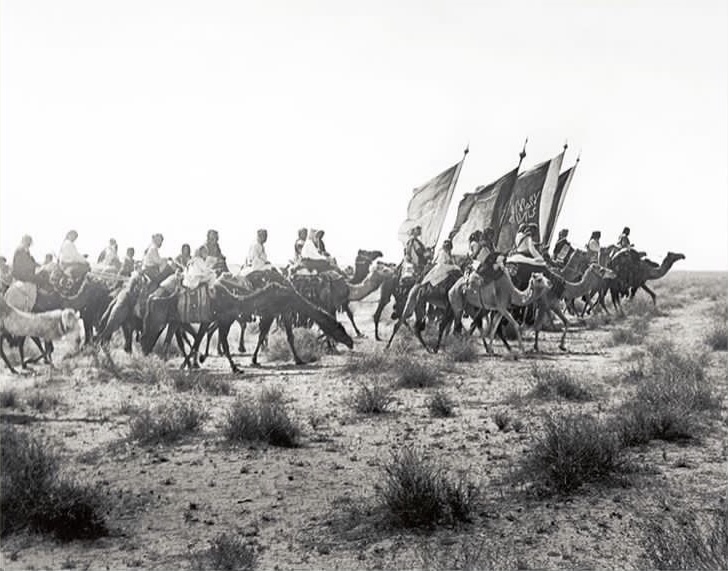
- ARAB NEWS
- 16 May 2024

Jonathan Gornall
“Hero” is a word all too easily bandied about. But on a simple metal plaque at Masmak fortress in Riyadh are recorded the names of 63 men to whose heroism the Kingdom of Saudi Arabia owes its very existence.
After their defeat by the rival Rashidi dynasty at the Battle of Mulayda in 1891, the Al-Saud were driven out of Riyadh and into 11 long years of exile.
That ended on Jan. 15, 1902, when Abdulaziz ibn Abdul Rahman Al-Saud and a small force stormed Riyadh’s Masmak fortress, ousting the Rashidis for good in the single most important founding event in the story of the Kingdom of Saudi Arabia.
Unable to stomach exile any longer, Abdulaziz and his volunteers set out from Kuwait in late September 1901. Abdulaziz decided to surprise Riyadh’s defenders by attacking from an unexpected direction, and at first led his men southwest, keeping the Gulf coast to their left.
Surviving on little more than butter, dates and the water in their goatskins, at night they laid up in desert hollows, careful not to be seen by wandering tribesmen.
Unknown to them, waiting to be discovered beneath the desert sands where they lay their heads each night was the world’s largest oilfield. Within a generation it would transform the fortunes of the state whose very existence they were poised to lay down their lives to secure.
By November the small force was camped in the vicinity of the modern town of Haradh, on the northern edge of the Empty Quarter and some 250 km from Riyadh. It was there that a messenger from Kuwait caught up with the party, bearing bad news — the Turks were said to be coming to the aid of the Rashid in Riyadh.
Back in Kuwait, it was assumed that Abdulaziz would give up and return home. Instead, goes the legend, he gathered his men about him, read them the letter and invited those who wished to return to Kuwait to do so, without shame.
As for himself, he said, he would prefer to die at the gates of Riyadh, and those of a like mind were welcome to join him.
All stood by him, crying out “To the death!”, and only the messenger returned to Kuwait, carrying a message from Abdulaziz to his father: “Tell him we shall meet again, God willing, in Riyadh.”
Abdulaziz may have been courageous, but he was not foolhardy. Instead of heading straight for Riyadh, he took his men further south into the Empty Quarter, where they lay up unseen for almost 50 days in the vicinity of the oasis of Yabrin, hoping their disappearance would lull Riyadh’s garrison into a false sense of security.
The plan worked. They were seven days’ ride from Riyadh and Abdulaziz timed his party’s arrival to coincide with the thin moon and dark nights at the end of Ramadan. Finally, as the city’s defenders slept late after the Eid Al-Fitr celebrations of the night before, Abdulaziz and his men gathered on the plateau overlooking the city.
At sunset the assault party moved silently forward, climbing the walls of the city and taking up position in a house opposite the gates of Masmak fortress. Behind its walls lay the sleeping Rashidi governor, Ajlan.
The next morning, as the governor and a handful of guards emerged from the fortress, Abdulaziz and his men rushed forward. There are various accounts of what happened next, but most agree on the following dramatic narrative.
As Ajlan and his guards turned back for the safety of the fortress, the governor was tackled to the ground by Abdulaziz himself. As the future King fought with Ajlan, Abdulaziz’s life was saved by his cousin, Abdullah ibn Jalawi ibn Turki Al-Saud, who slew a guard who was about to strike his cousin from behind.
As defenders on the battlements opened fire, a spear thrown by Fahad ibn Jalawi ibn Turki Al-Saud, another cousin of Abdulaziz, missed Ajlan and became embedded in the woodwork of the gate, where the tip of the weapon can still be seen today.
Wounded, Ajlan managed to slip inside the fortress through the small opening within the gate, but Abdullah plunged in after him and slew him.
It was all over. The garrison surrendered and later that day thousands of Riyadh’s citizens gathered to pledge allegiance to Abdulaziz. In the words of author Robert Lacey’s 1981 book “The Kingdom”, “the Al-Sauds were masters in their own home again — and they have remained the masters ever since.”
The fate of all 63 of the men who accompanied Abdulaziz to Riyadh is lost to history. What is certain is that all earned the epithet “hero.”
On that fateful day in January 1902, Abdulaziz ordered 23 men to remain in reserve, guarding the camels, and assaulted Masmak fortress with the remaining 40.
Among them were 10 members of Abdulaziz’s own family, all of whom played a key part that day in the restoration of the Al-Saud.
Abdullah ibn Jalawi fought in many of the subsequent battles that led to the unification of the Nejd and the Hijaz. He would later serve as governor of Al-Qasim and Al-Ahsa and lived long enough to witness the foundation of the Kingdom of Saudi Arabia on Sept. 23, 1932. He died in 1935.
Fahad ibn Jalawi, whose spear tip remains embedded in the gate of Masmak fortress to this day, was killed in one of the battles of unification later that same year.
Also there that historic day were Abdullah ibn Saud ibn Abdullah Al-Saud and Fahad ibn Ibrahim ibn Meshari Al-Saud. Both survived the recapture of Riyadh and several of the major battles that followed, only to be killed at Al-Bakiriya in 1904.